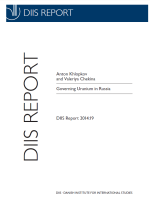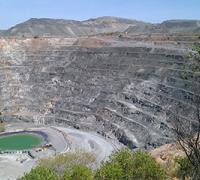Governing Uranium in Russia
Russia currently has the world’s third largest fleet of nuclear power plants with 33 reactors in operation. To supply the country’s growing energy demand, Russia plans to double its nuclear energy output by 2035 with ten reactors currently under construction and a number of existing ones being upgraded to extend service life. Russia is also one of the world’s leading nuclear exporters, delivering nuclear fuel to ten countries. Additional 19 new power reactors will be launched in foreign countries by 2024 with negotiations under way for building another 27.
If these targets are achieved, Russia’s annual demand for natural uranium will rise three-fold to 30,000 tonnes by 2035.
At the same time, Russia’s uranium mines have supplied no more than 20% of the national nuclear industry’s requirement for natural uranium over the past decade. Russia therefore relies heavily on its uranium mining assets abroad, securing new sources of supply and drawing down its existing stockpiles of secondary sources.
This trend, as well as Russia’s increased presence on the global market for nuclear fuel cycle services, is driving an increase in the Russian nuclear industry’s transparency in order to comply with domestic legislation of the partner countries, including the producers of natural uranium.
This country report analyses the Russian nuclear industry’s demand for natural uranium, its sources of supply and the legal framework that regulates the use of nuclear materials in Russia. It is part of the global Governing Uranium project, led by DIIS, which seeks to identify governance gaps in uranium accountability and control and to provide policy recommendations for improving front end transparency, security and regulation.

